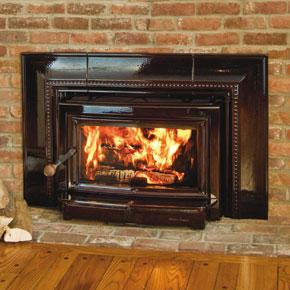 Adapt your fireplace, an inefficient heating source, with a fireplace insert to improve efficiency and maintain that cozy hearth look while generating heat.
Adapt your fireplace, an inefficient heating source, with a fireplace insert to improve efficiency and maintain that cozy hearth look while generating heat.
Sitting before a crackling fire may be your favorite way to warm up this winter, but an open fireplace isn’t only an inefficient heating source, it also can create high levels of smoke inside and outside your home.
But an energy-saving wood burning insert lets you transform your existing hearth into a super-efficient heater that can cut your energy bills — by as much as 40%.
However, savings vary greatly depending on the insert’s efficiency, your climate, your home’s layout, the R-value of your insulation, the height of your ceiling, and regional differences in fuel costs, which are constantly in flux.
What You'll Spend
Inserts generally run about $3,000 to $4,000, including installation and a chimney liner.
But don’t rely on any insert as a primary heater; you need a furnace just in case something goes wrong and to protect pipes from freezing in cold climates.
Wood-Burning Insert Creates Real Heat With Real Logs
If a freestanding wood stove is too large to fit into your hearth or the style of your hearth makes it impractical, you can opt for a wood-burning insert — a wood stove without legs. This firebox slides into your existing masonry or metal fireplace and burns real logs.
Your installer snakes a stainless steel liner down your chimney and fits a decorative flange made of black cast iron or steel or colored porcelain around the insert, hiding its steel sides and filling the gap between the box and your hearth.
A front door with ceramic glass radiates heat into the room. You open the door to stack the wood, then shut it, on most models, while your fire is burning. Most wood-burning inserts also create convection heat with a fan located underneath the firebox.
Wood-burning inserts can heat anywhere from 1,000 to 3,000 sq. ft., depending on their size. Inserts are small enough to fit into most traditional masonry fireplaces.
An insert designed to heat 1,500 square feet will burn for three to five hours before you need to reload; for 1,500 to 3,000 sq. ft., you usually have an eight- to 10-hour burn window.
Green Factor: Efficiency rating of 60% to 80% on U.S. Environmental Protection Agency-certified models.
For more information contact West Sport in Sudbury.
houselogic.com

Comments
{tag_commentlist}